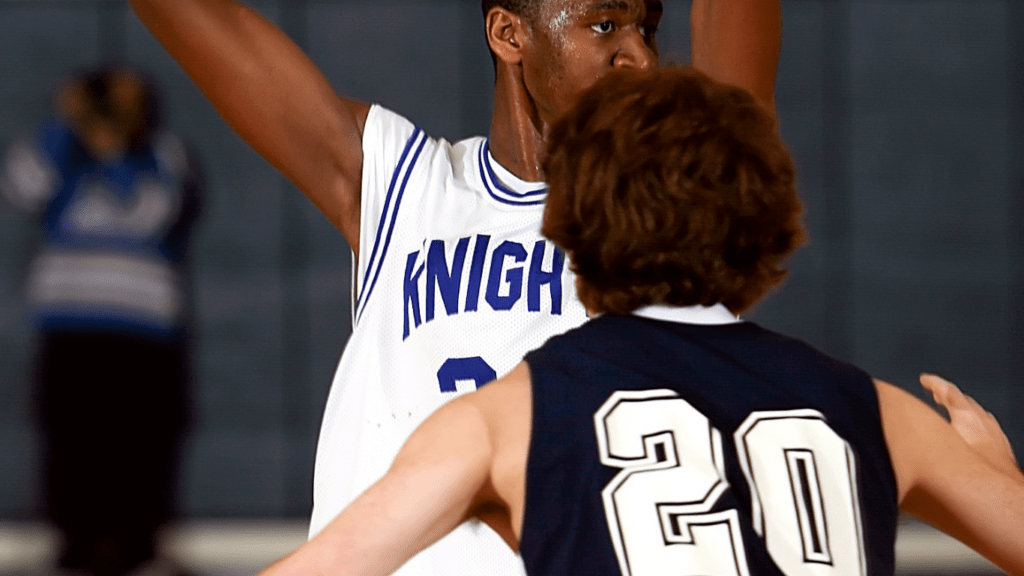In today’s fast-paced NBA, small-ball lineups have become a strategic cornerstone for many teams, revolutionizing the way basketball is played. As a basketball enthusiast, I’ve witnessed the shift towards smaller, more versatile lineups that emphasize speed, spacing, and three-point shooting.
This evolution has blurred traditional positions, challenging the conventional norms of the game. Small-ball lineups have forced coaches to adapt, encouraging innovation and creativity on the court. As I delve into the evolution of these lineups, I’ll explore how they have reshaped offensive and defensive strategies, creating mismatches and opportunities for teams to excel.
Join me as we dissect the impact of small-ball lineups on modern basketball and uncover the tactics behind their success in today’s highly competitive league.
Origins of Small-Ball Lineups
Exploring the origins of small-ball lineups in modern basketball reveals a strategic shift that has revolutionized the game. Small-ball lineups first gained prominence as teams sought to maximize speed, spacing, and three-point shooting on the court. This approach challenged traditional basketball norms by prioritizing versatility over size and strength.
In the early days, small-ball lineups were viewed as unconventional and risky, with skeptics concerned about their ability to compete against larger, more physical opponents. However, visionary coaches recognized the potential of these lineups to create mismatches and exploit the weaknesses of traditional big men.
As the NBA landscape evolved, the emphasis on pace, perimeter shooting, and defensive versatility grew more pronounced. Teams began to prioritize players who could switch seamlessly on defense, stretch the floor with their shooting, and push the tempo on offense. This shift marked a departure from traditional positional roles, leading to a more fluid and dynamic style of play.
The origins of small-ball lineups can be traced back to innovative coaches who were willing to challenge the status quo and embrace a new approach to the game. By recognizing the advantages of smaller lineups in today’s fast-paced, perimeter-oriented NBA, these coaches paved the way for a revolution in basketball strategy that continues to shape the league’s competitive landscape.
Impact of Small-Ball Strategies
- Impact on Offense: Small-ball strategies have revolutionized offensive play by prioritizing speed, spacing, and three-point shooting, allowing teams to exploit mismatches and create more scoring opportunities.
-
Defensive Adjustments: These strategies have also forced teams to adapt their defensive schemes, emphasizing versatility and switchability to counter smaller lineups, thereby altering traditional defensive approaches in the NBA.
Defensive Adjustments
Defensive schemes have undergone significant adjustments in response to the prevalence of small-ball lineups. Teams incorporating smaller, more agile players have prioritized versatility and quickness on defense.
Switching defensive assignments seamlessly, defending against perimeter shooting threats, and effectively guarding against drives to the basket are crucial aspects of adapting to small-ball offenses. In addition, traditional big men have had to adapt their defensive style to keep up with smaller, faster opponents.
This shift has led to increased emphasis on rim protection, lateral quickness, and the ability to contest shots from the perimeter. Overall, the defensive adjustments necessitated by small-ball strategies have redefined the roles and responsibilities of players on the defensive end.
Offensive Advantages
Small-ball lineups offer several distinct advantages on the offensive end of the court. By fielding a team with multiple perimeter threats and versatile playmakers, offenses can create mismatches and exploit defensive weaknesses effectively.
The emphasis on three-point shooting in small-ball lineups forces opponents to extend their defense, opening up driving lanes and creating space for shooters. Moreover, the increased pace of play associated with small-ball strategies puts pressure on opposing defenses, leading to transition opportunities and fast-break scoring chances.
The ability to play at a high tempo and utilize quick ball movement enhances offensive efficiency and keeps defenses off balance. Overall, the offensive advantages afforded by small-ball lineups have revolutionized scoring dynamics in modern basketball.
Pioneers of Small-Ball Basketball
Exploring the roots of small-ball lineups reveals a lineage of pioneering coaches who dared to challenge conventional wisdom and reshape the fabric of basketball strategy. Visionaries like Don Nelson and Gregg Popovich stand out as early architects of small-ball tactics, recognizing the potential of nimble lineups to outmaneuver traditional powerhouses.
Their bold experimentation paved the way for a paradigm shift in the sport, emphasizing agility, versatility, and long-range marksmanship over sheer size and strength. The legacy of these trailblazers endures in the modern game, where small-ball lineups have become not just a trend but a defining feature of strategic play.
Coaches like Steve Kerr and Mike D’Antoni have further refined these strategies, blending elements of speed, precision passing, and defensive flexibility to craft high-octane offenses and disruptive defenses. By emulating the innovative approaches of these basketball maestros, teams seek to unlock the full potential of small-ball tactics and push the boundaries of competitive play to new heights.
Small-Ball Lineups in the NBA Today
Reflecting on the current landscape of the NBA, small-ball lineups continue to be a prevalent and dynamic force that shapes the gameplay and strategic decisions of teams. In today’s NBA, small-ball strategies are not just a trend but a fundamental aspect of many team’s playbooks, showcasing the evolution and impact of these lineups over time.
Exploring the rosters of NBA teams reveals a shift towards versatile, multi-skilled players who can seamlessly transition between positions, emphasizing speed, agility, and outside shooting. These small-ball lineups are designed to create mismatches on both ends of the court, exploiting the agility and shooting prowess of players to outmaneuver traditional big men and capitalize on offensive opportunities.
Coaches in the NBA have continued to innovate and refine small-ball tactics, adapting to the changing dynamics of the game and leveraging the strengths of their roster. The influence of visionaries like Don Nelson and Gregg Popovich can still be seen in the strategic decisions made by coaches such as Steve Kerr and Mike D’Antoni, who have elevated small-ball strategies to new heights.
Defensively, teams have embraced versatile defensive schemes that prioritize quickness and the ability to switch assignments seamlessly. This defensive flexibility allows for better perimeter defense against three-point shooters and the ability to counter fast-paced offenses with agile defenders.
Traditional centers have had to evolve their defensive approach, focusing more on perimeter defense and quick rotations to keep up with the pace of small-ball lineups. Offensively, small-ball lineups excel at creating spacing on the court, generating open looks from beyond the arc, and exploiting defensive mismatches.
The emphasis on ball movement, quick decision-making, and outside shooting has revolutionized offensive strategies, leading to high-scoring games and fast-paced transitions that keep opponents on their toes. Small-ball lineups in the NBA today represent a culmination of strategic innovation, player versatility, and adaptive coaching.
These lineups have redefined the traditional notions of basketball positions, ushering in a new era of fast-paced, dynamic gameplay that continues to shape the competitive landscape of the NBA.






